Want to play in the snow at Snoqualmie Pass this winter? Prepare to pay up.
In an effort to manage overcrowding for the benefit of customers and account for visitors who are not ski area patrons, The Summit at Snoqualmie announced a new parking system this week. Under the arrangement, permits will be required between 7 a.m. and 2 p.m. daily from Nov. 18 to April 30. Violators will receive citations.
Parking will remain free for all season pass holders and visitors who buy multiday ticket packages. Single-day ticket holders and Ikon pass holders must pay $5 per vehicle per day. Those who purchase the Summit’s uphill travel pass ($50 per season), which is intended for ski touring on marked runs, will be restricted on peak days to three specific lots. All other visitors who park in the Summit’s lots will be charged $55 per vehicle per day.
Parking codes will be distributed to pass holders and multiday ticket buyers via email and must be inputted into Summit’s parking management website to be redeemed for permits. The digital permit system will launch in November.
Summit’s daily rate for customers without passes or tickets is likely the highest of any ski area in North America. (Many other ski areas, however, charge their lift ticket and season pass holders more for daily parking than Summit does.)
“Snoqualmie Pass has grown up a lot in the last five to six years, and it’s been pretty wild sometimes if conditions are good or it’s a powder day,” said Summit’s general manager Guy Lawrence via phone from Alpental. “We have to do something. That starts with managing our parking lots.”
READ MORE: Let it snow: Spokane-area ski hills ready for winter
Unmanaged parking and limited enforcement of existing parking regulations has created traffic jams at interstate on- and offramps, headaches for skiers boxed in at the end of the day and frustration for Snoqualmie Pass residents whose driveways are blocked by illegal parking.
Lawrence estimates that on peak days, upward of 500 vehicles using the Summit’s lots are not ski area customers. These visitors consist of a mix of snow tourists whose primary goal is to throw snowballs and take photos, snowshoers and backcountry skiers heading out via winter trailheads to recreate in the national forest, and groups of instructors and students on avalanche education courses. These visitors create a “knock-on effect” by partially filling lots early in the morning, leading to parking choke points throughout the day.
“We have an extraordinary amount of people who have no intention of going to the ski area,” he said. “They are the difference between being parked out versus having space available most of the day.”
Lawrence said freeing up more space for the Summit’s paying customers is the policy’s main goal, noting that families buy weekend ski school lessons months in advance but can struggle to find parking on lesson days. He also cited the high cost of snow removal, from expensive equipment — the Summit’s four snow plows run about $250,000 each and typically survive seven Cascades winters — to rising labor and fuel costs.
The Summit’s parking change is increasingly common in the ski industry. In the 2021-22 season, Crystal Mountain became the first ski area in Washington to charge for parking with $20-$30 weekend and holiday rates. The ski resort simultaneously launched free coach bus service from Enumclaw.
Summit does not currently have plans to provide any bus transportation from the lowlands as part of its new parking system.
READ MORE: 4 snowshoeing and cross-country skiing adventures in central Washington state
Other popular ski resorts near population centers that charge daily for at least some parking spots include Whistler Blackcomb in British Columbia (CA$10-$28), Palisades Tahoe in California ($30), Alta Ski Area ($25) and Park City Mountain Resort ($27-$47) in Utah, and Vail Ski Resort ($30-$40) in Colorado. Oregon Sno-Park Permits ($4 per day, $25 per season) are required to park at Mt. Hood Meadows and Timberline outside of Portland.
However, Summit’s new plan is unique in its high daily rate for non-ski area users and its daily applicability. Many ski areas distinguish between peak and nonpeak days, charging less or nothing at all for nonholiday weekdays.
Lawrence said the Summit decided to err on the side of consistency with a flat rate in effect every day, all season long.
“For right now, we think it’s better to be consistent and put our best forward on that front so there’s no misunderstanding,” he said.
Recreation groups greeted the announcement with dismay.
“We are disappointed to see this parking plan,” said Tess Wendel, a board member of the Cascade Backcountry Alliance, an advocacy group for backcountry skiers and snowshoers. “It feels like we have a situation where access is pay-to-play. That’s a real equity problem creating a high financial threshold for new winter users.”
The Summit at Snoqualmie operates predominantly on national forest land under a special use permit. Several of the most popular — and reliable in terms of snow — winter trailheads can only be accessed by Summit parking lots, including the Alpental Valley and Commonwealth Basin areas that lead into the Alpine Lakes Wilderness.
The Washington State Parks winter recreation program has established three permanent nonmotorized Sno-Parks along Interstate 90 since 2021: Annette Lake, Asahel Curtis and Easton Reload. However, Gold Creek Pond, a popular snowshoeing and family photo location, is potentially slated for a 10-year environmental remediation closure beginning in 2025, though exact details remain unclear. A spokesperson for the Okanogan-Wenatchee National Forest did not respond to a request for comment by press time.
“There’s a lot of public land up there and this is a big reduction in access,” said Wendel.
Lawrence disputed the notion that the Summit’s parking plan reduces access to public lands. “Absolutely not,” he said, justifying the $55 daily fee as appropriate for a privately run business to charge, versus public agencies that charge less, like the Washington Sno-Park ($25 per day, $50 per season), Northwest Forest Pass ($5 per day, $30 per year) or national parks pass ($30 per day, $55 per year for national parks only, $80 per year including all federal public lands).
Lawrence said that Summit’s plan is a work in progress that’s subject to change. “We are going to assess and we’ll take feedback seriously,” he said.
The Cascade Backcountry Alliance, meanwhile, hopes the new parking plan will be the catalyst for a long overdue conversation at Snoqualmie Pass. The state’s busiest winter recreation area is also split into several jurisdictions that don’t always coordinate closely: unincorporated parts of King and Kittitas counties, two national forest units, the Summit and the Washington State Department of Transportation overseeing I-90.
“We’re hoping this will spur the Forest Service into having a little more urgency for winter recreation management planning,” Wendel said.
For example, she pointed to a long-simmering proposal for a nonmotorized Sno-Park at the Snoqualmie Pass Pacific Crest North trailhead. Also known as the Kendall Katwalk trailhead, this Forest Service parking lot sits covered in snow all winter long in the heart of Snoqualmie Pass and at the entrance to coveted backcountry skiing and snowshoeing terrain.
Mt. Baker-Snoqualmie National Forest representatives did not respond to multiple requests for comment by press time.
“We’re trying to think bigger picture about access as a whole,” Wendel said.
Plan your adventures throughout the West Coast at westcoasttraveller.com and follow us on Facebook and Instagram @thewestcoasttraveller. And for the top West Coast Travel stories of the week delivered right to your inbox, sign up for our weekly Armchair Traveller newsletter!

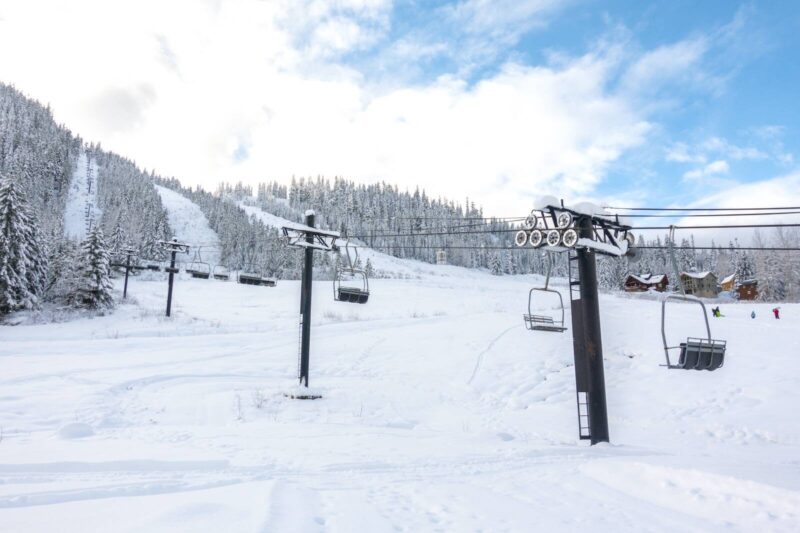
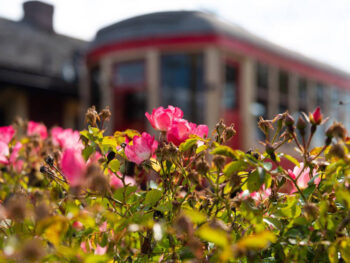

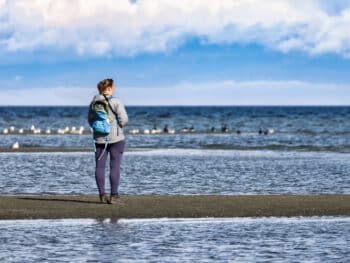
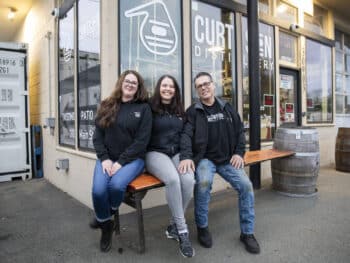
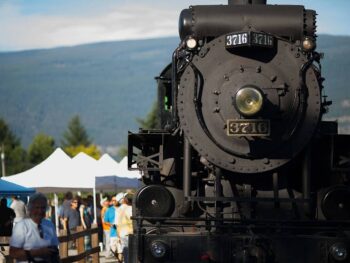
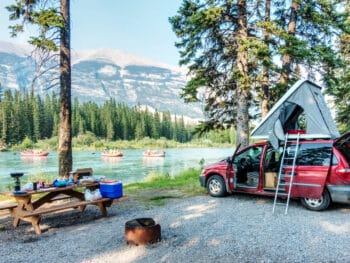

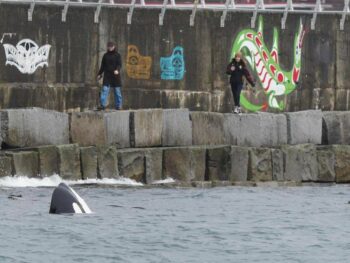
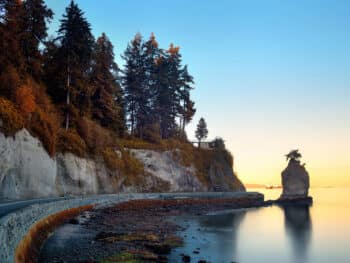
 Let it snow: Spokane-area ski hills ready for winter
Let it snow: Spokane-area ski hills ready for winter